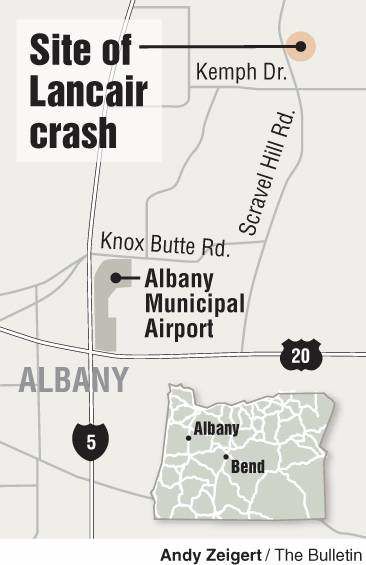Three die in Lancair plane crash northeast of Albany
Published 4:00 am Saturday, February 9, 2008

- Three die in Lancair plane crash northeast of Albany
A Lancair ES single-engine plane built in Redmond crashed Friday morning near Albany, killing the three men onboard.
The plane had departed from McNary Field in Salem about 10 a.m. and was bound for Klamath Falls, said Mike Fergus, a Seattle-based spokesman for the Federal Aviation Administration. It crashed in a dirt field four miles northeast of Albany about 12 minutes after it took off.
The plane’s owner, 49-year-old Louis Lamb, of Sublimity, was believed to be at the controls, Linn County Undersheriff Will McAnulty said. He was flying with friends Steven Teeney, 36, of Silverton, and Riley Bunn, 32, of Stayton, to a hunting convention in Utah, McAnulty said.
The plane was being tracked by air traffic controllers and had an instrument flight plan, Fergus said, which would have allowed it to fly through clouds.
The plane was registered to Lamb, who is listed in an FAA database as a private pilot. Bunn also was a private pilot. But neither of the men had the special rating required to fly through clouds, according to the database.
Witnesses on the ground reported seeing the plane spinning out of control and heard its engine sputtering as it dropped in the seconds before the crash, McAnulty said.
Lancair planes are kit-built, meaning that the owners build much of the plane themselves with help from the Redmond manufacturer. The planes are all-composite, and owners can pick exactly which type of engine and other features they want to install. The plane that crashed Friday was last registered at the end of September, according to the FAA’s aircraft database. Lancair CEO Joe Bartels did not know when the plane was built.
At the time of the crash, cloud layers started at between 2,500 and 3,500 feet in the Willamette Valley, based on automated weather observations at the Salem and Corvallis airports. The freezing level, the height above which ice could start forming on the plane, was about 2,000 feet.
Two hours before the crash, a pilot flying over Eugene encountered light icing while climbing to 13,000 feet. And about two hours after the crash, another pilot flying over Corvallis reported light icing in clouds at 5,000 feet, according to an online database of weather reports from pilots.
Bartels, a pilot himself, said investigators should be able to recover a memory chip from the wreckage that should include a large amount of data about the plane’s speed, heading and altitude in the minutes before the crash.
He said his company’s planes are safe, but that none of them are certified to fly in icing conditions.
“The only thing you’ve got to do is you have to stay out of conditions that are going to get you hurt,” Bartels said. “Part of those conditions include icing.”
Ice that builds up on a plane in flight will slowly eat away at its performance, decreasing the amount of lift the wings can generate. It also cuts down on the amount of power coming from the engine as the ice sticks to propeller blades.
If pilots don’t take action to get out of the ice, and if the plane isn’t equipped to get rid of the ice, that can eventually lead to a crash. However, officials have not said whether ice was a factor in the crash.
The last radar return from the plane was at 13,000 feet, according to the flight tracking Web site FlightAware.com. The coordinates of that return were within about a mile of the crash location on the ground.
In the minutes before the crash, the plane’s groundspeed dropped from 117 mph to 62 mph, according to FlightAware tracking data.
The FAA and the National Transportation Safety Board are investigating the crash, Fergus said. It generally takes the NTSB six months to a year to complete a report on the cause of a crash.
There have been 56 fatal crashes of various Lancair models since 1990. Only one of those crashes, in addition to Friday’s incident, involved a plane in the ES line.
In 2001, a pilot escaped injury when his Lancair ES crashed in Arizona, according to the NTSB’s accident database. He had installed a marine engine that was not approved by Lancair.






